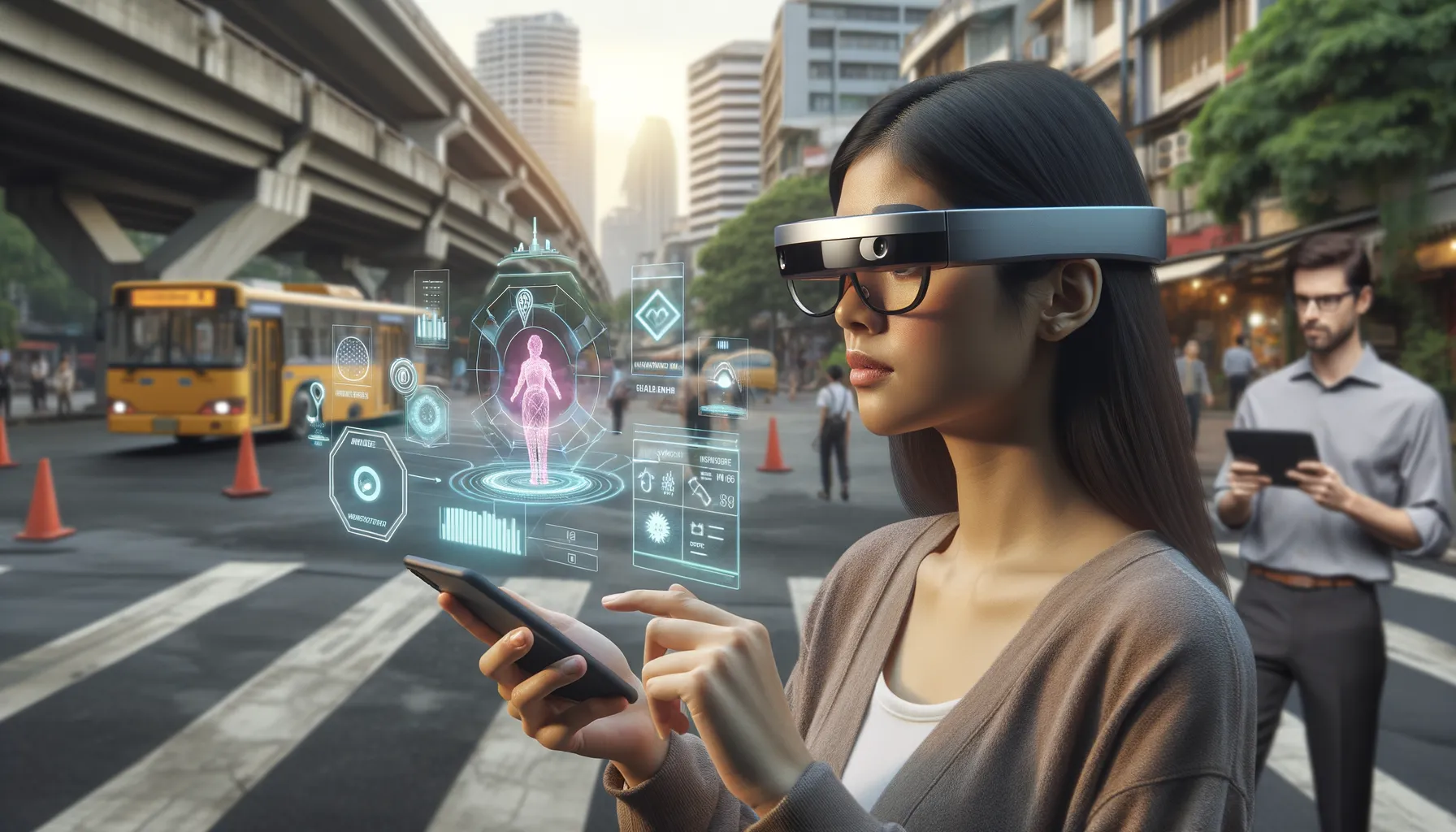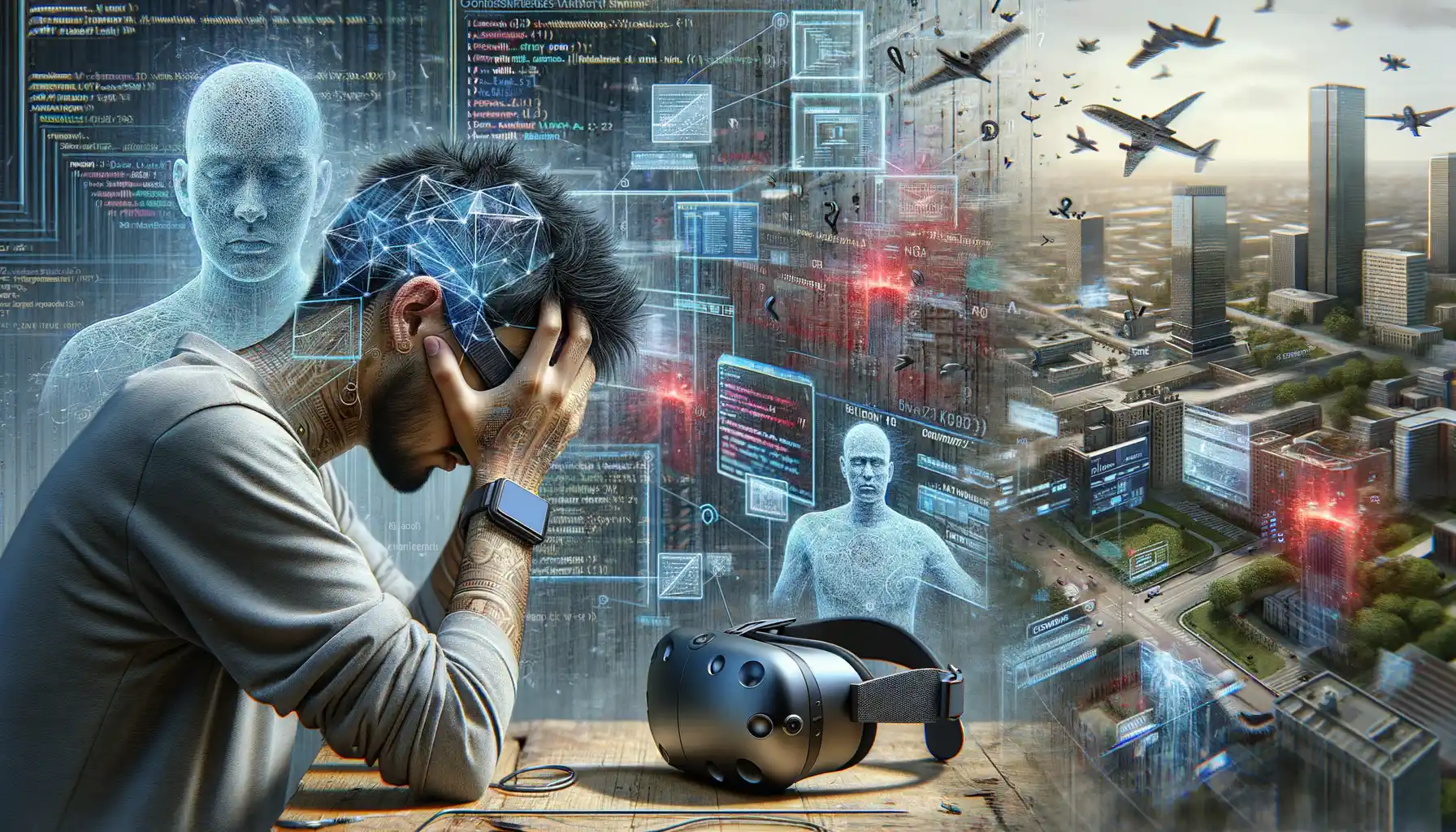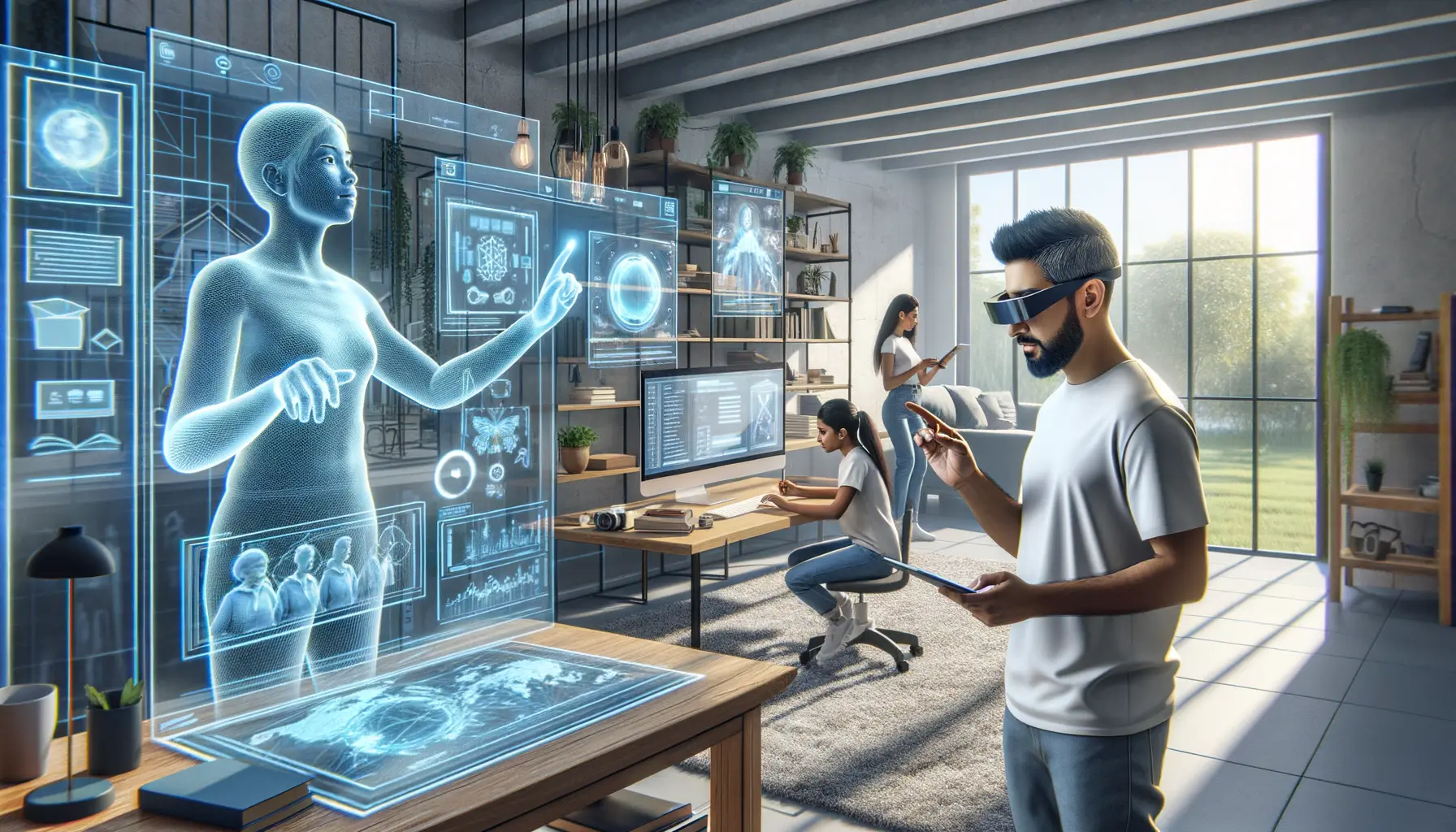Introduction to Augmented Reality (AR)
Imagine a world where your smartphone can transform into a magical lens, one that layers digital wonders onto your physical reality. That’s the world of Augmented Reality (AR), and it’s not some far-off sci-fi concept—it’s already here, reshaping how we interact with technology and the world around us.
What Exactly is Augmented Reality?
At its core, AR overlays computer-generated elements—like images, sounds, and other sensory inputs—onto your real-world environment. But don’t confuse this with Virtual Reality (VR), which whisks you into entirely virtual realms. AR keeps you connected to your surroundings, while adding a touch of digital sparkle. Think of apps like Pokémon GO that turn a walk in the park into an adventure filled with adorable critters, or tools that let you see how that bold yellow couch would look in your living room before buying it.
Why Does AR Feel So Thrilling?
Because it’s personal—and it meets you where you are. Pull out your phone and you might:
- Design the perfect selfie with digital makeup filters.
- Watch constellations appear as you raise your screen to the night sky.
- Learn exactly how to fix your sink, step by step, thanks to interactive guides.
AR isn’t just about entertainment—it’s about eliminating guesswork, blending creativity with practicality, and making everyday moments extraordinary.
Impact of AR on Everyday Applications

Transforming the Way You Navigate Your World
Imagine pointing your phone at a restaurant on a busy street and instantly seeing its menu, customer reviews, and even available tables pop up on your screen. That’s the magic of Augmented Reality (AR). It’s not just about adding visuals to the real world – it’s revolutionizing how we interact with our surroundings. Consider travel apps: what if your maps could guide you with virtual arrows overlaying the actual streets? No more guesswork or wrong turns.
For shoppers, AR is a game-changer. Forget trying to visualize if that sleek sofa fits in your living room – apps now let you “place” it there virtually. Clothes? Jewelry? Eyewear? You can try them on digitally before you click “buy.”
- Education: From kids dissecting virtual frogs to history lovers walking ancient ruins from their couch.
- Communication: Why settle for emojis when AR lets you send interactive holograms?
AR is taking regular apps and sprinkling them with a dose of futuristic, user-first magic. Think of it as your reality, but better.
Emerging Trends in AR Technology

Revolutionizing Interaction: AR Gets Smarter
Imagine pointing your phone at a pair of sneakers and instantly seeing them on your feet in perfect 3D detail. That’s not just cool—it’s *magic unfolding in real-time*. One of the most thrilling trends in Augmented Reality is how it’s evolving to predict what we want before we even ask for it. With the rise of AI-powered AR, apps are becoming smarter, able to adapt to your specific preferences.
Think personalized shopping assistants that know your size, or virtual workspaces where holographic sticky notes float mid-air. The future isn’t just about adding visuals; it’s about creating an *intuitive partnership* with the user.
New Horizons: Untethered and Immersive
AR tech is also shedding its dependence on clunky devices. Thanks to advancements like lightweight AR glasses and improved smartphone capabilities, you won’t just be “looking through” AR—you’ll be living inside it.
- 5G connectivity: Speedier data means smoother, more immersive experiences.
- Spatial audio integrations: AR will soon tickle your ears as much as your eyes, creating richer multi-sensory layers.
- Gesture control: Interacting with AR through natural hand movements is no longer sci-fi!
These are just glimpses of what’s brewing—interactive pizza boxes, anyone? Yes, that’s already happening! The line between reality and augmented experiences is blurring, and we’re here for it.
Challenges and Limitations of AR Integration

Technical Hurdles That Stifle AR’s Magic
Picture this: you’re in your living room, using an AR app to visualize a new couch. It’s floating there, looking stunning—until the tech glitches and suddenly, it’s halfway through your wall. Frustrating, right? These moments remind us just how messy integration can get.
One of the thorniest issues is precision. AR relies heavily on data-hungry processes, like mapping a room or tracking an object’s movements. But what happens when lighting changes or your internet connection lags? The result could be a jittery, unreliable experience that breaks immersion.
Let’s not forget hardware limitations:
- Older smartphones may lack the processing power to run AR smoothly.
- Even high-end devices struggle with battery drainage during intensive AR use.
Social and Ethical Dilemmas in AR Adoption
AR isn’t just about fancy visuals; it interfaces with our very lives, raising tricky questions. How much of your personal data is being collected when an app scans your surroundings? And who controls how that data is used? Imagine pointing your camera at a crowded street. Sure, you get cool directions, but you’re also potentially exposing passersby to privacy risks they didn’t consent to.
And then there’s accessibility. Not everyone can afford the tech or understands it. Do we risk creating a digital world that leaves some people behind? It’s an exciting frontier, yes—but it’s one dotted with obstacles both technical and human.
The Road Ahead for AR in Daily Life

How AR is Revolutionizing Your Everyday Adventures
Picture this: you’re walking through your city, your trusty smartphone in hand. Suddenly, you scan a historic building and, like magic, an interactive story unfolds right before your eyes. This isn’t science fiction anymore—it’s the kind of seamless integration that Augmented Reality (AR) is bringing to our everyday lives.
Soon, tasks will be smarter and faster with AR-enhanced tools. Imagine:
- Virtual shopping assistants helping you choose clothes by projecting how they look on you in real-time.
- Your kitchen transforming into a high-tech cooking school as AR overlays show measurements and steps directly on your ingredients.
- Or even your garden morphing into an AR-guided botanist to ensure that every plant thrives.
Gone are the days of fumbling over manuals or searching endlessly for YouTube tutorials—it’s all there in front of you, exactly when you need it.
A Future That Feels Made Just for You
What makes all of this truly incredible is that AR evolves with *you*. It’s not just one-size-fits-all; it learns your habits, your favorite apps, and your quirks. For example, if you’re a runner, AR glasses might craft routes that avoid traffic while showing real-time metrics. If you’re a traveler at heart, AR could turn foreign menus into familiar dishes, translating text effortlessly while recommending local favorites.
The road ahead isn’t about technology dominating our lives—it’s about technology weaving itself into our world so seamlessly that it feels like an intuitive partner. What would you do if life became this enhanced? Dreams meet reality with AR. Buckle up—this journey is just getting started.
